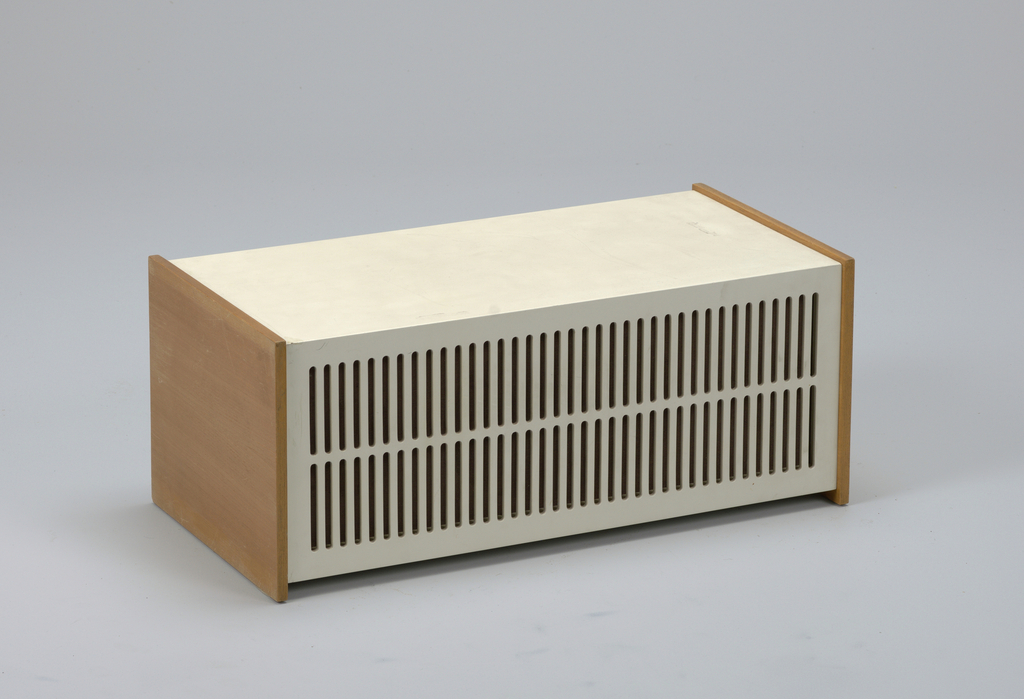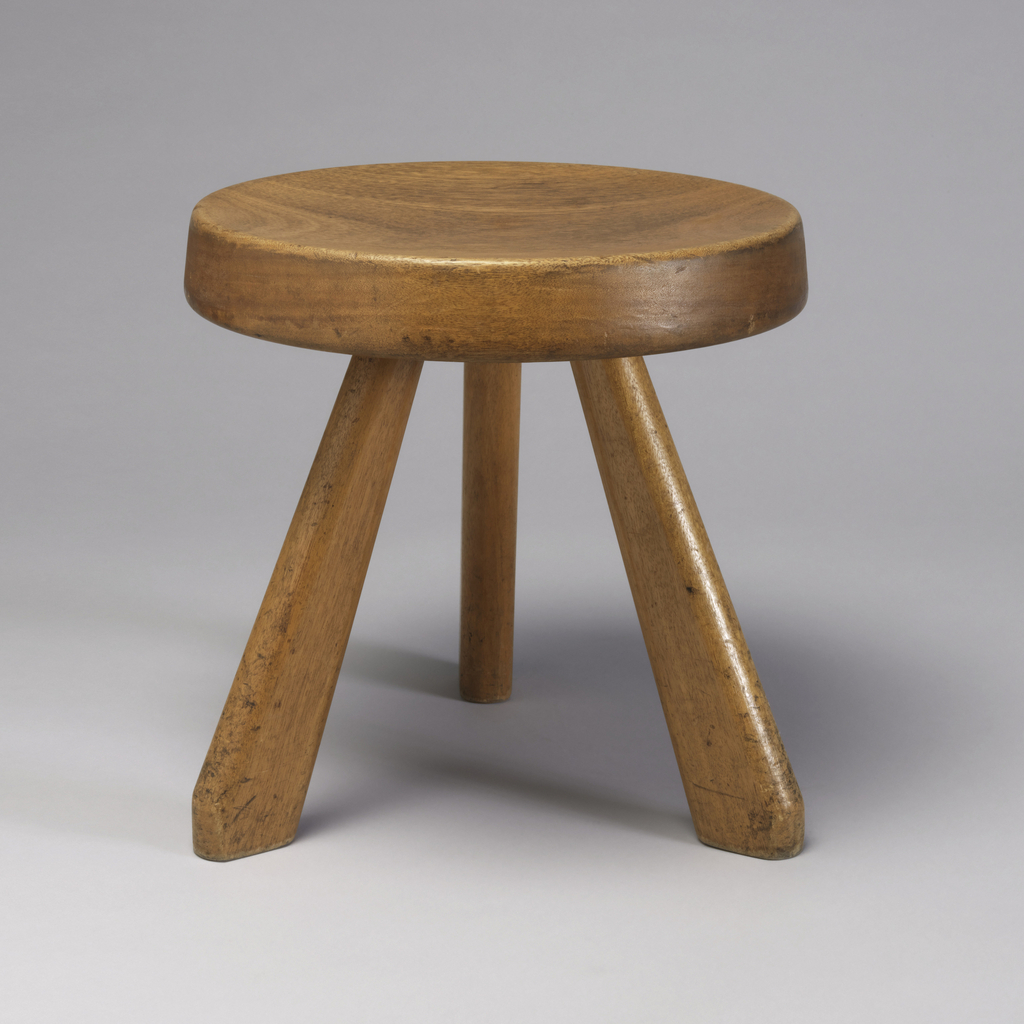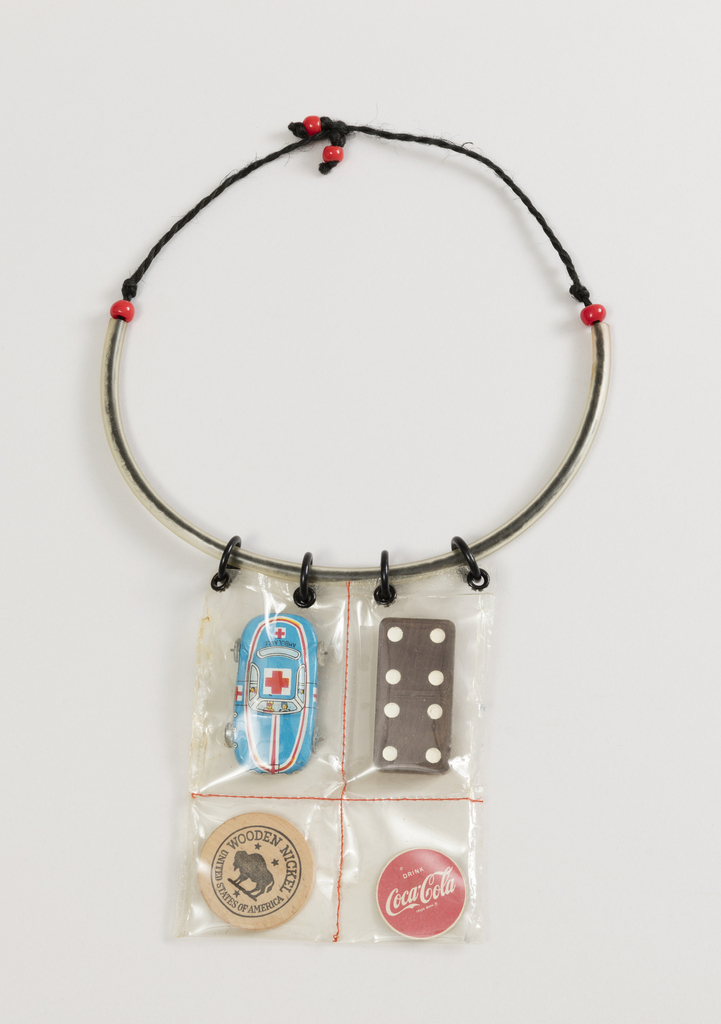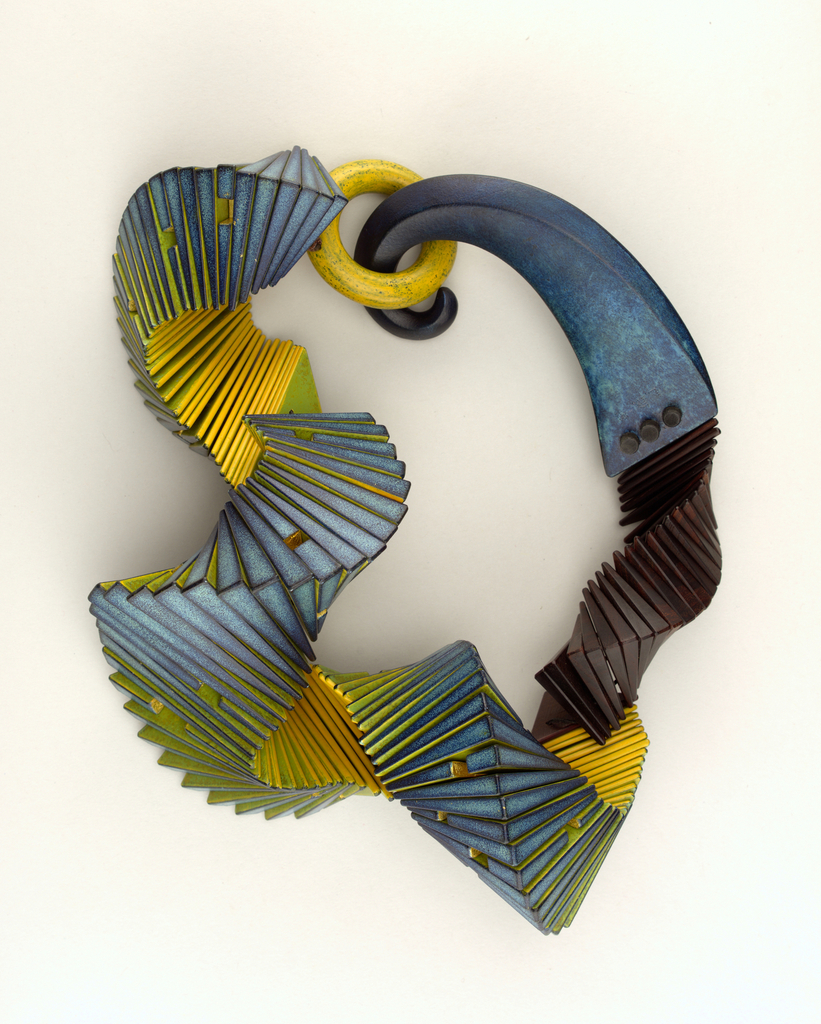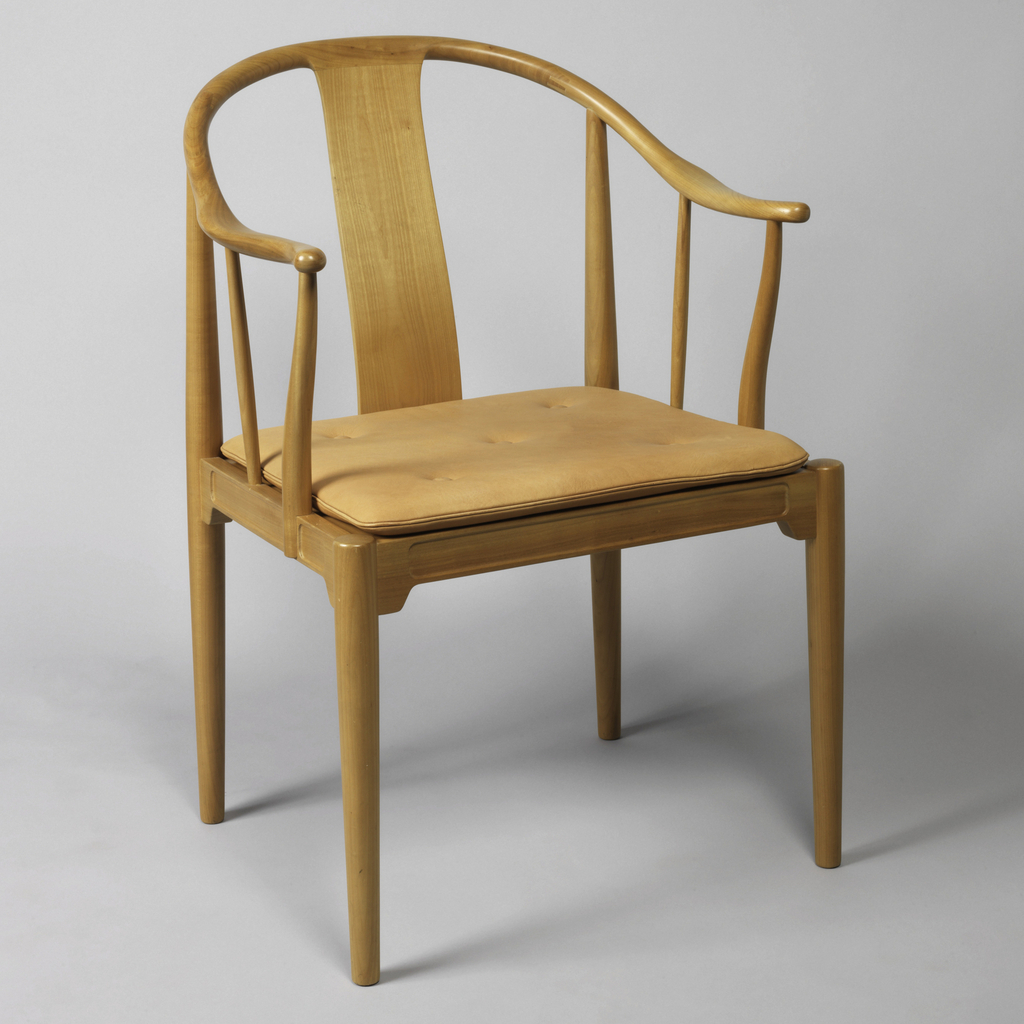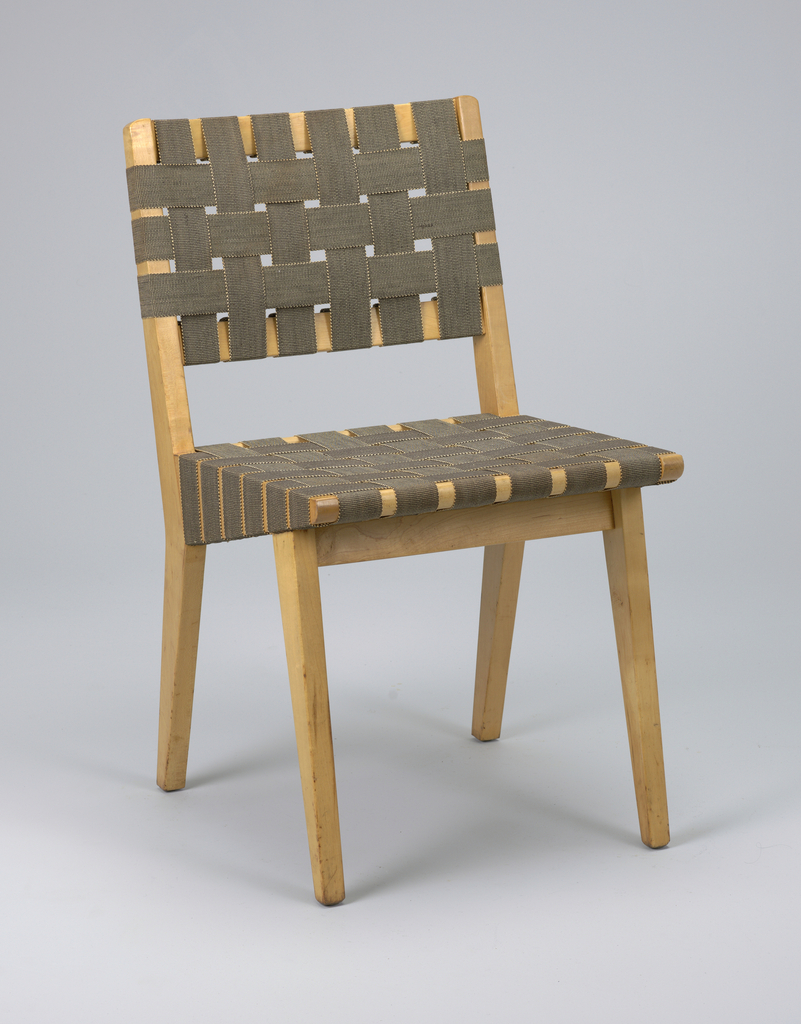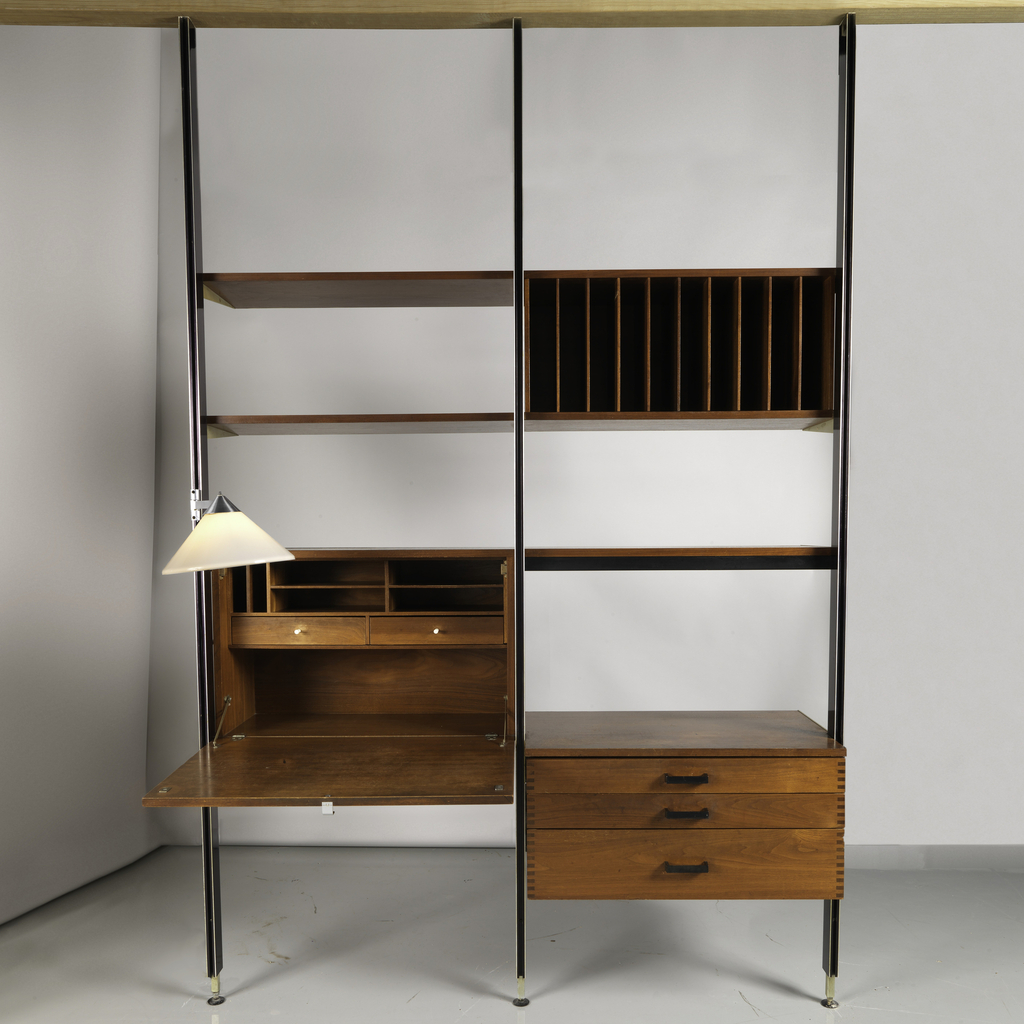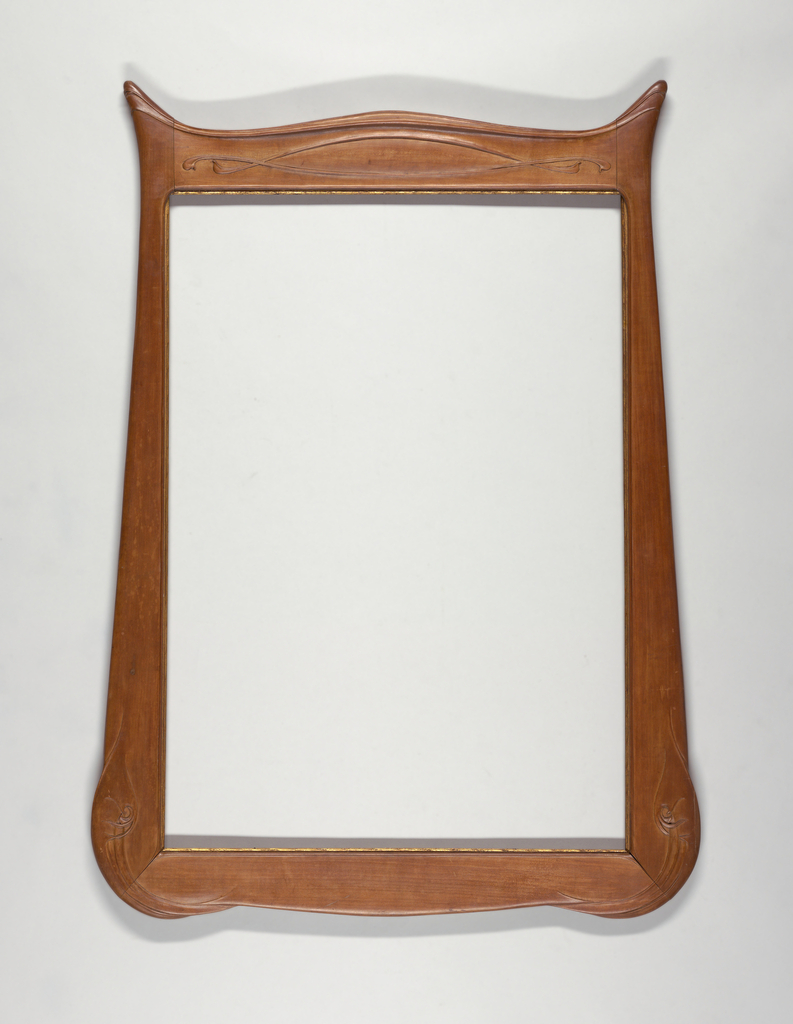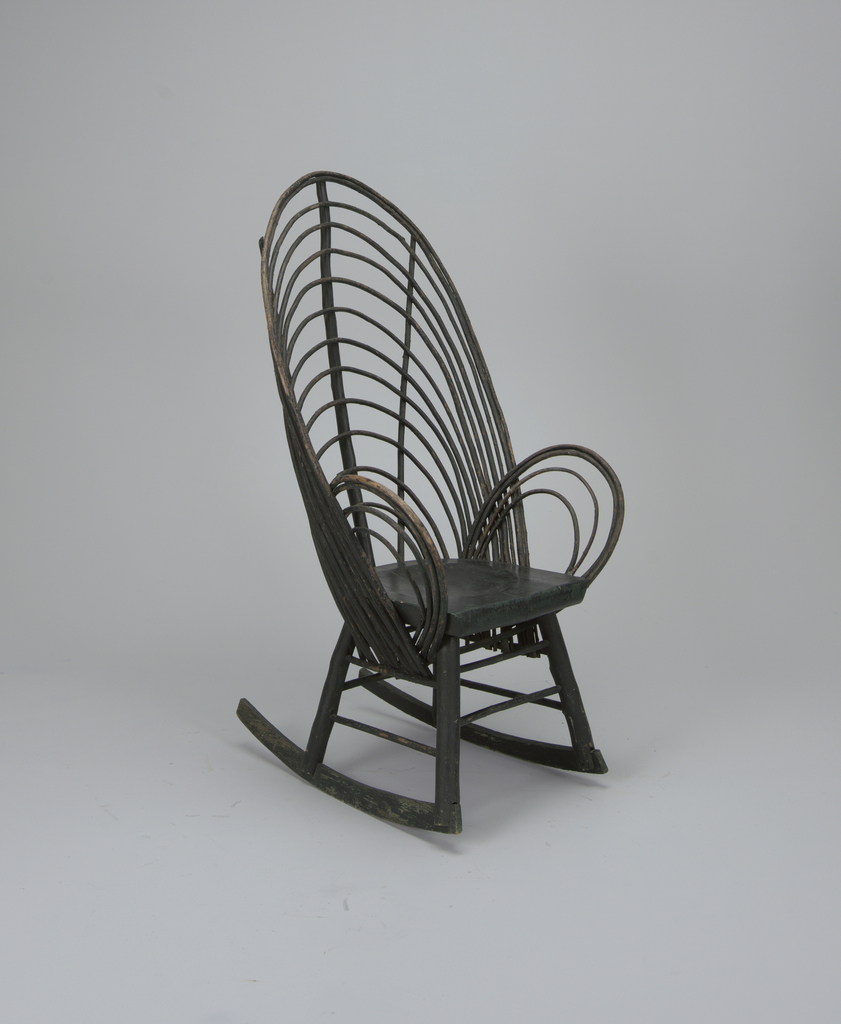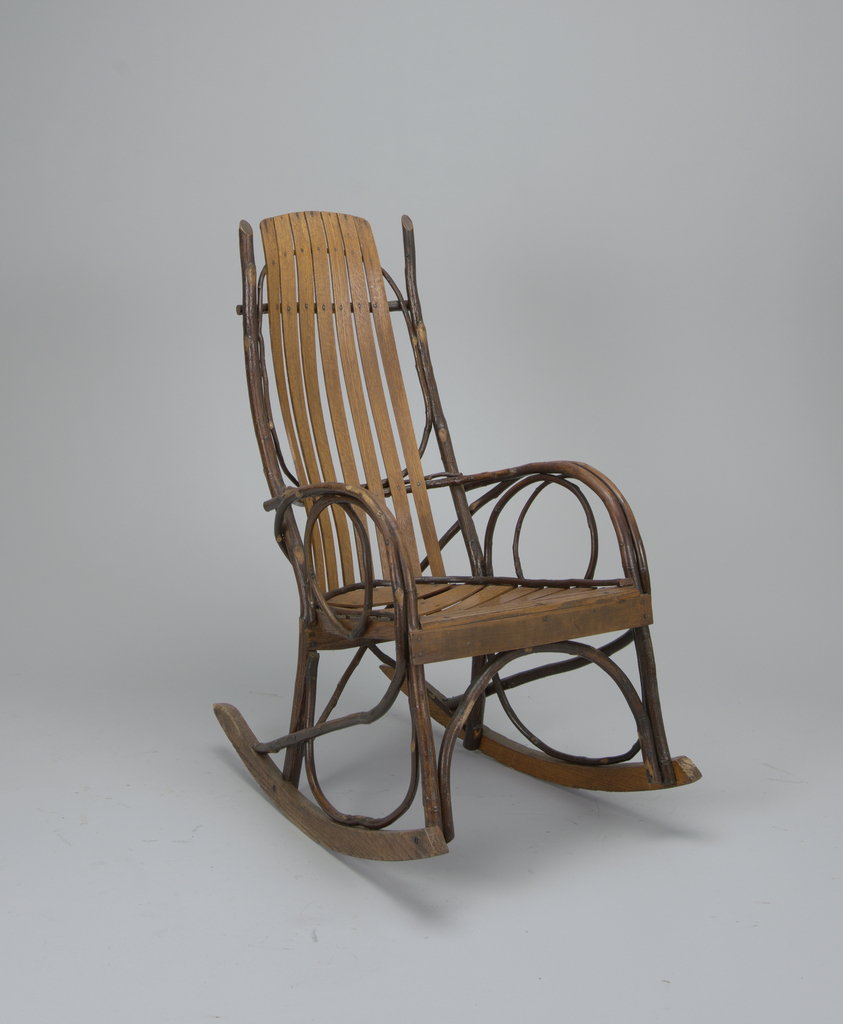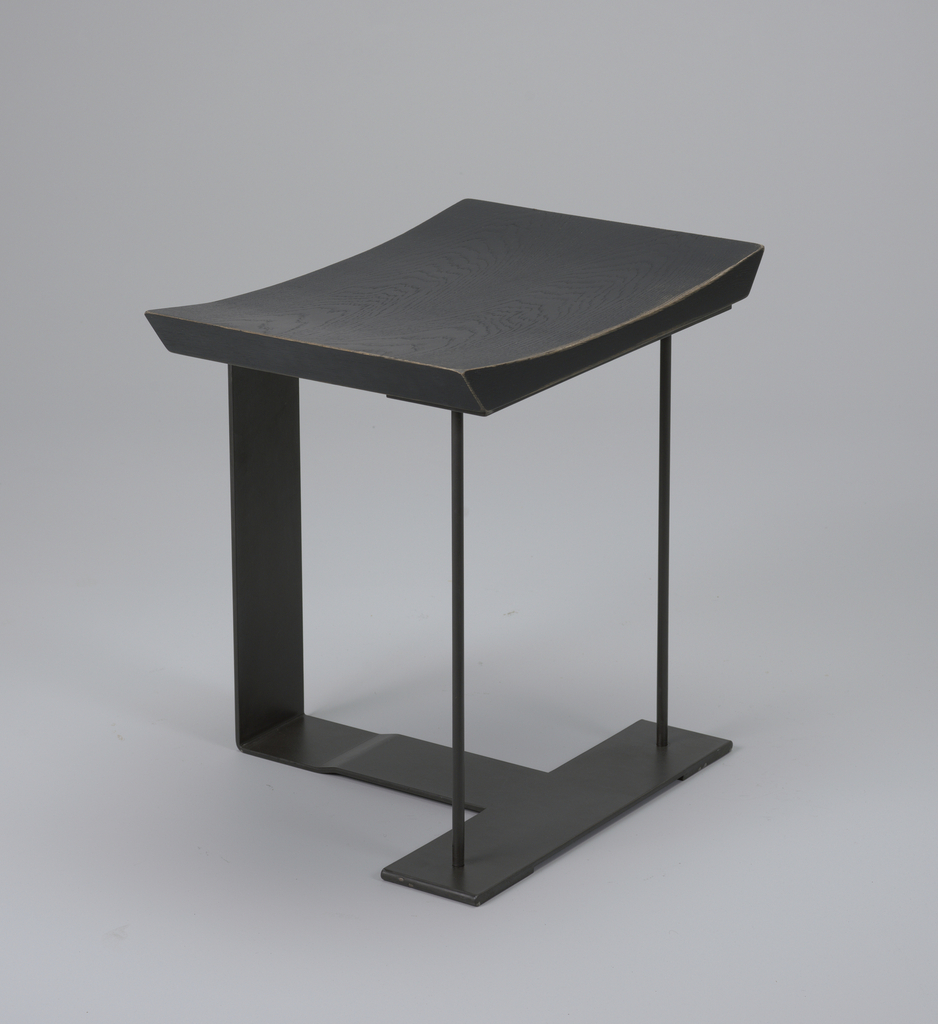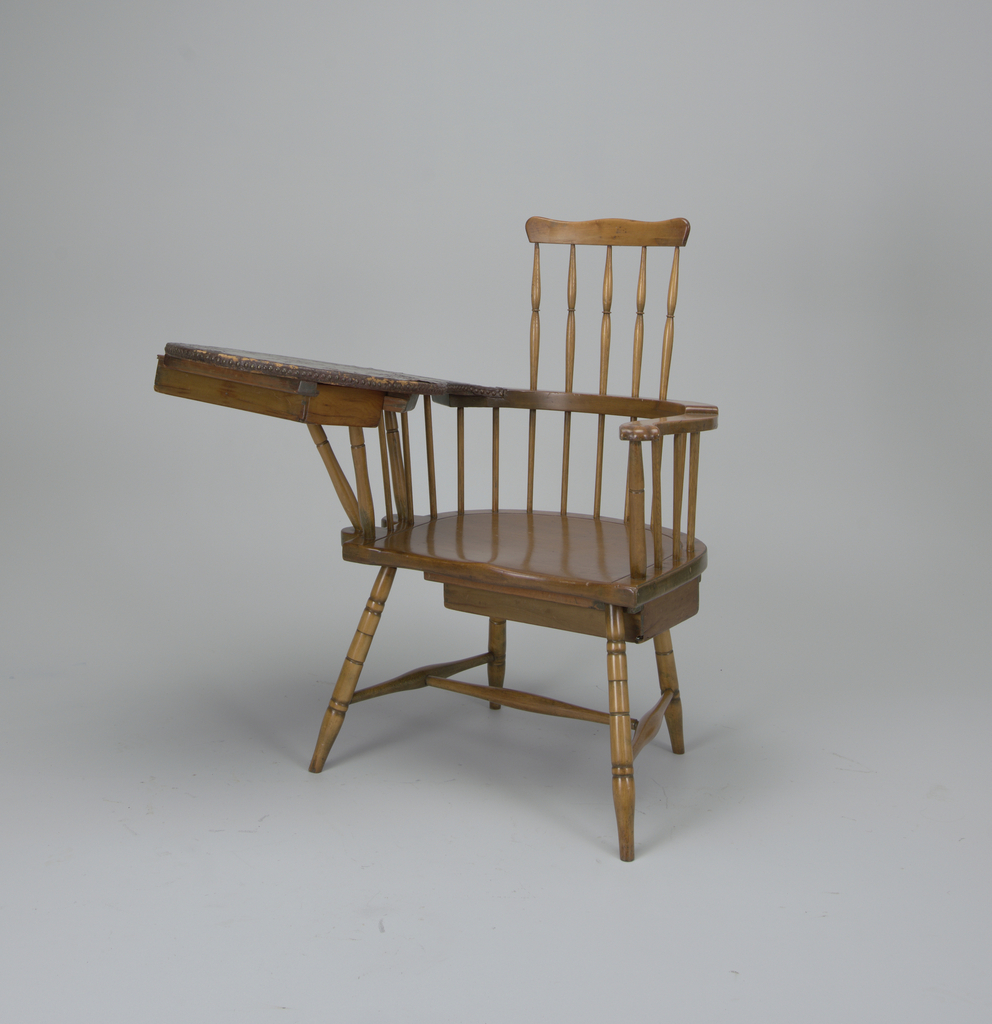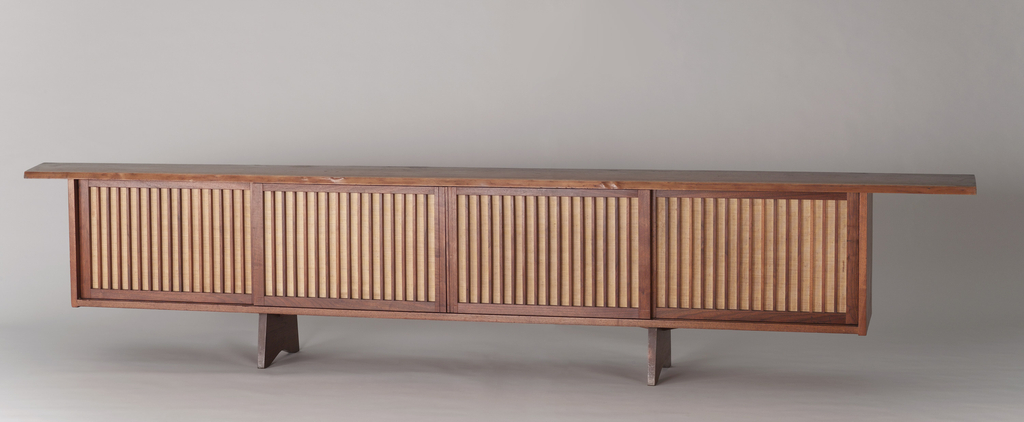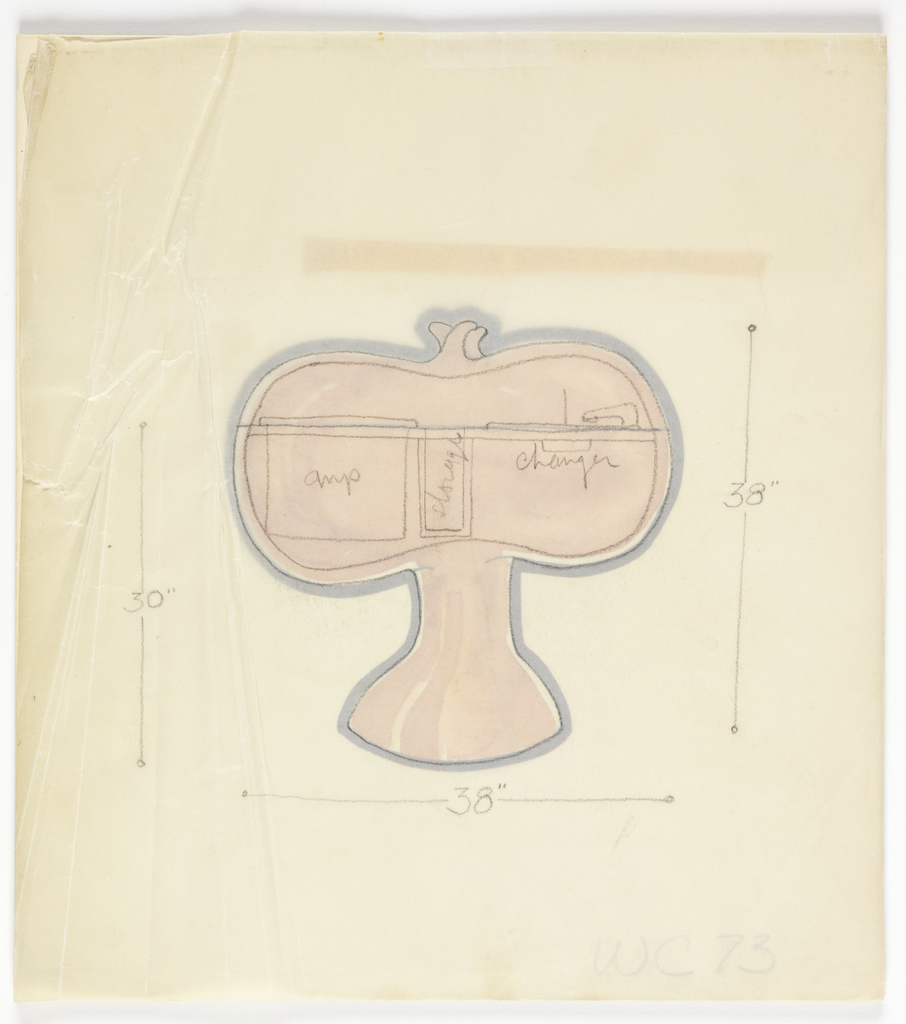In celebration of our new exhibition The Senses: Design Beyond Vision, this Object of the Day post explores the multisensory experience of an object in Cooper Hewitt’s permanent collection. Dieter Rams, Chief Design Officer for German consumer products manufacturer Braun AG from 1961-95, designed the neutral and unassuming L1 speaker in 1957. Influenced by Braun’s...
In a 1929 article for The Studio, Charlotte Perriand, the designer of this stool, wrote polemically about the advantages of using metal over wood, noting its utilitarian and aesthetic value. She said, “Metal plays the same part in furniture as cement has done in architecture. It is a Revolution.”[1] Her now-iconic B306 chaise longue made...
In celebration of Women’s History Month, March Object of the Day posts highlight women designers in the collection. This necklace was made by Ramona Solberg in the early 1970s. It was in her private collection, and until her death she was its only owner. The pendant is a simple interpretation of reliquary jewelry which usually...
When a piece of jewelry is made of natural materials such as this neckpiece designed by Liv Blåvarp, it forges a special connection with the wearer. There is something about natural substances that bring out feelings of sensuality and an intimate connection on a deeply primal level. When Blåvarp began making jewelry in 1984, she sought to make...
The Chinese Chair, designed by Hans J. Wegner and manufactured by Fritz Hansen Inc. of Denmark, represents a piece of Western furniture inspired by the design aesthetic of Eastern culture. Capturing the nature of Chinese furniture design, the chair features soft, sloping, and rounded armrests, giving the shape an organic quality. Made in cherry wood,...
Hans J. Wegner was a pioneer in modern Danish design in the 1950s and 1960s. Having designed more than 500 chairs throughout his career, with 100 of them being mass-produced, he has been affectionately known within the design world as the “Master of the Chair”. His ingenious use of natural materials, in particular his admiration...
The Model 666WSP Chair, from 1943, is an example of the furniture designed by Danish-American designer Jens Risom, who died at 100 on December 9, 2016. Risom was the son of a prominent Danish architect and he, himself, is often regarded as one of the founders of midcentury modern design in America. He came to...
Herman Miller introduced George Nelson’s Comprehensive Storage System (CSS) in 1959 and produced it until 1973. Available in a variety of wood finishes, the CSS could also be customized to fit the needs of customers, thanks to its modular units that included shelves, drawers, and desk units, such as the CSS in the museum’s collection....
This week’s entries are dedicated to objects featured in the exhibition Thom Browne Selects, currently on view at Cooper Hewitt through October 23, 2016. Hector Guimard, well known as a prolific French architect-designer, demonstrates a more refined style during Art Nouveau through his use of pearwood. It was of utmost importance to Guimard to emphasize...
This chair was made in about 1900 in Catskill, New York, the region that inspired some of America’s greatest landscape painting. In the nineteenth century, artists, writers, and tourists travelled to the Catskills in awe of the falls, mountains, and landscape views, which Frederick Church among others so famously depicted. The rapid development of the...
This rocking chair was made in Indiana, where Amish first settled in the 1840s, and boasts hickory twigs bent to form its symmetrical sides and oak slats evenly arranged to form its seat. The dramatic contours of this chair ensure that it is at once attractive and comfortable. This graceful form is achieved by bending...
We can define as “rare” an artist whose work is hard to reach or to see, because there are only few creations that remain from him, and because the tracks that could explain most of them are lost. Trying to reach them becomes a true quest for the art lover. Pierre Chareau (1883-1950) was such...
What did George Washington, Thomas Jefferson, General Knox, and Benjamin Franklin have in common? Windsor chairs. These chairs were first produced in England in the very first years of the 18th century. Although many folk tales surround the origin of the name (including some involving George III caught in a rain storm), it is likely...
One of the twentieth century’s most renowned furniture makers, George Nakashima (1905–1990) is remembered for his reverence for natural materials. With its silky, nuanced grain and soft, contoured edges, this massive sideboard embodies his profound interest in the organic expressiveness of wood. Nakashima was born in 1905 in Spokane, Washington to first-generation Japanese immigrants. After earning a master’s degree in architecture...
This chest, by twentieth-century American designer/craftsman Wendell Castle is an outstanding example of the American studio furniture movement. Commissioned as a stereo cabinet, it is a variant of a blanket chest he crafted in 1968 that is now housed in the collection of the Memorial Art Gallery, University of Rochester, Rochester, New York. Castle’s work is...
